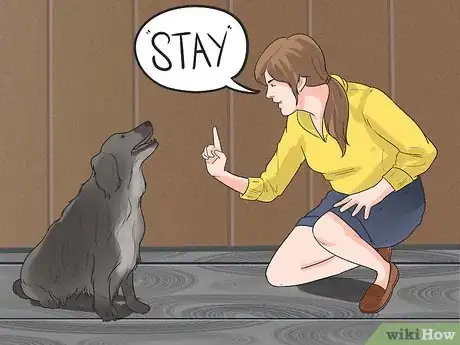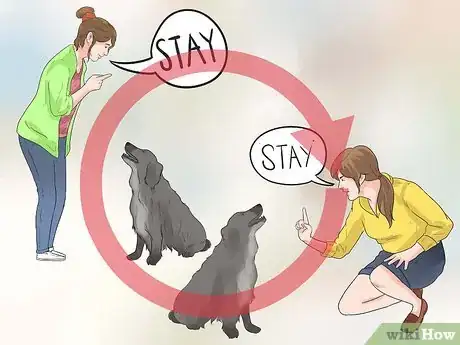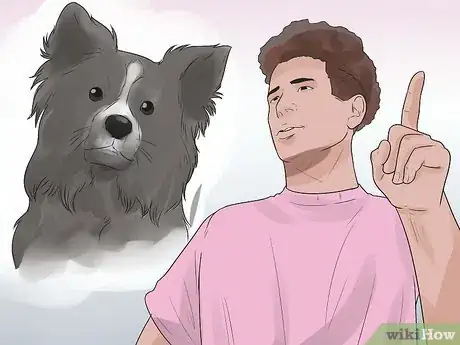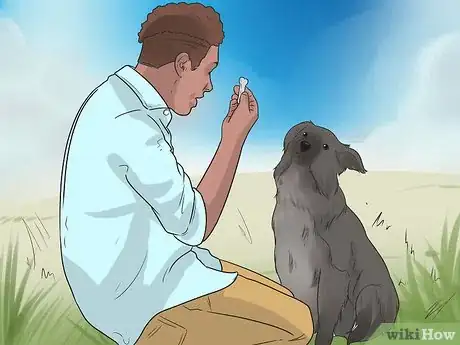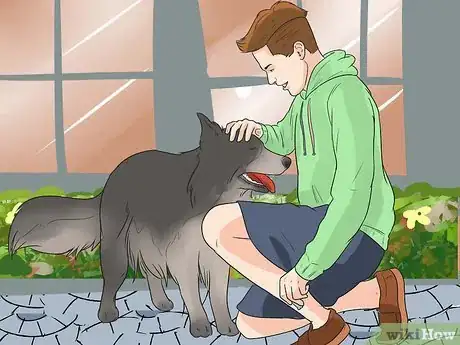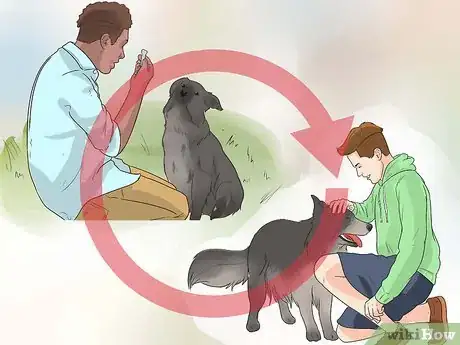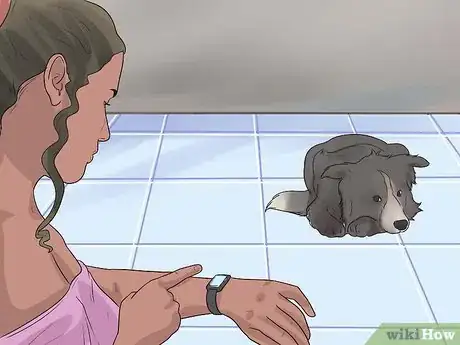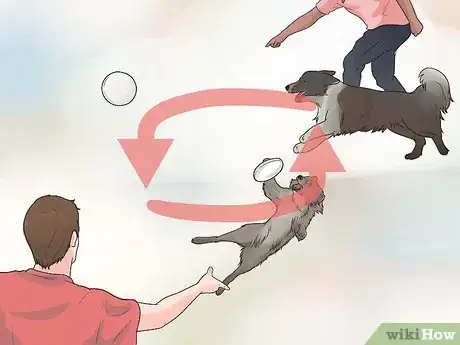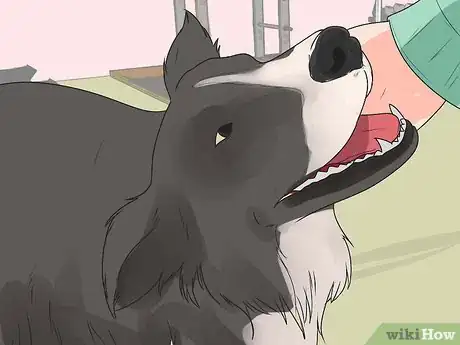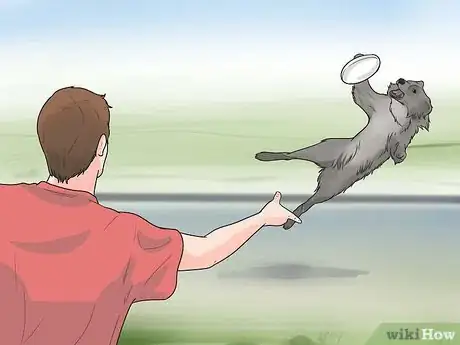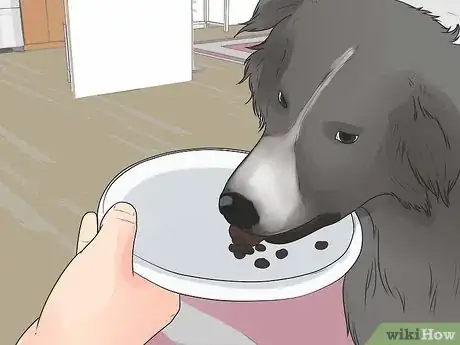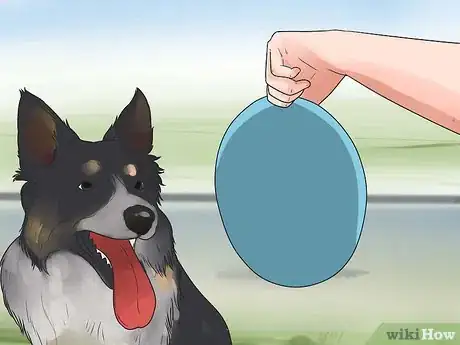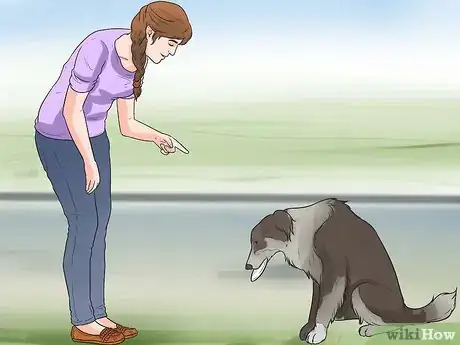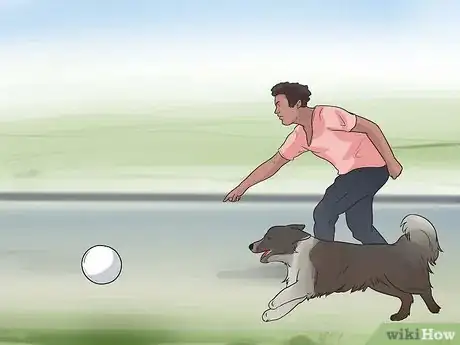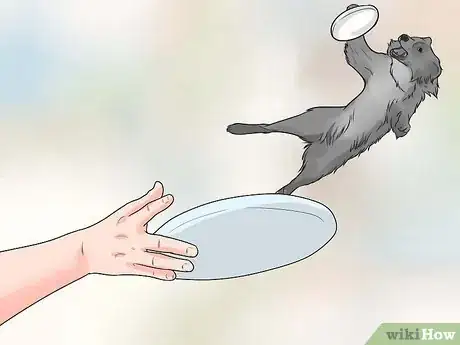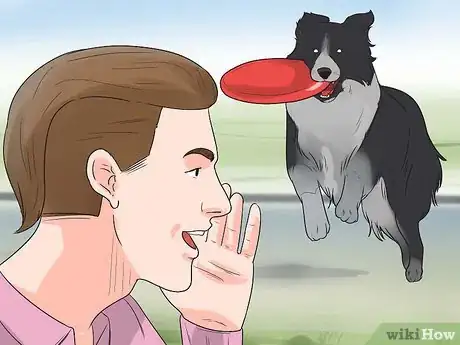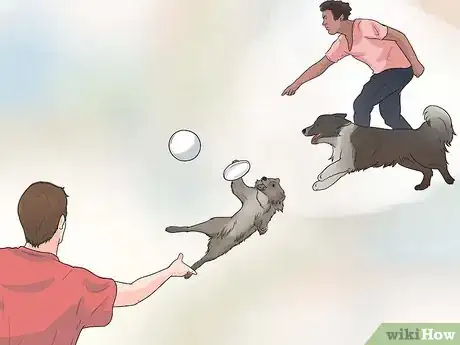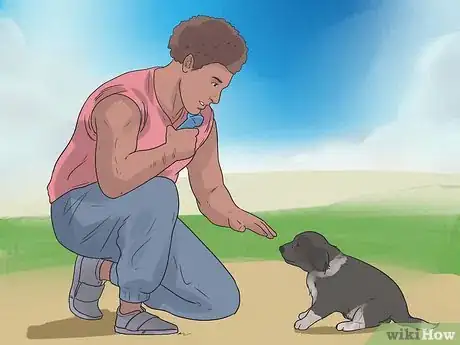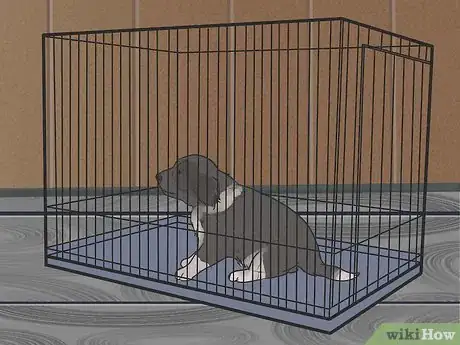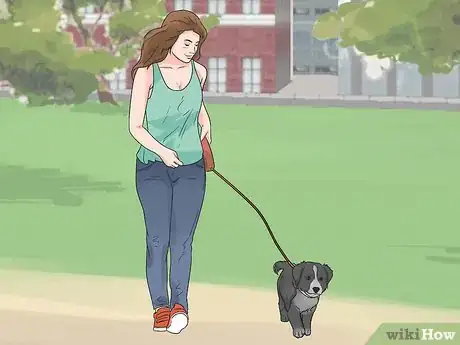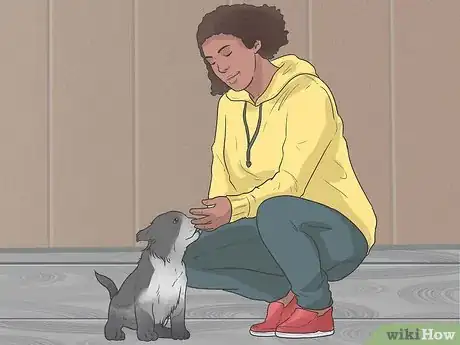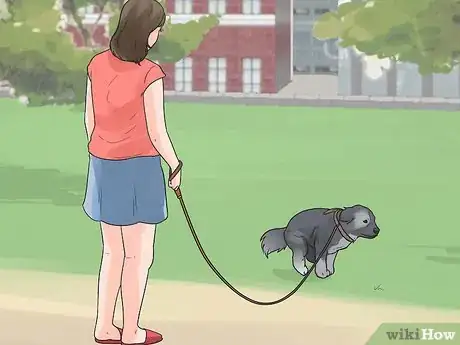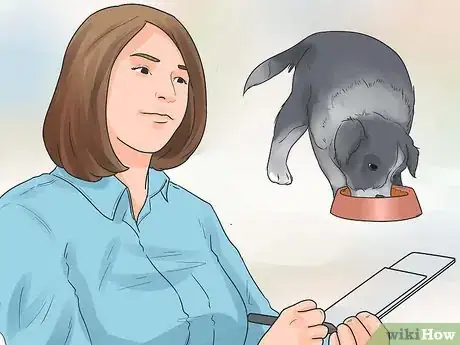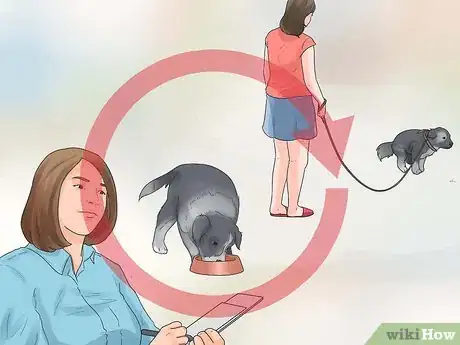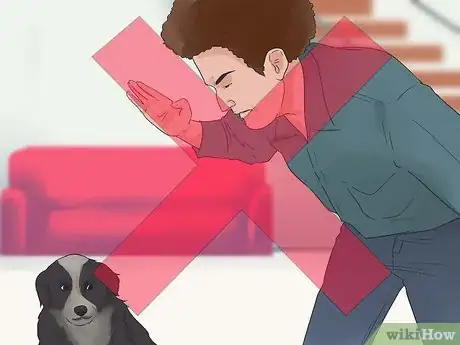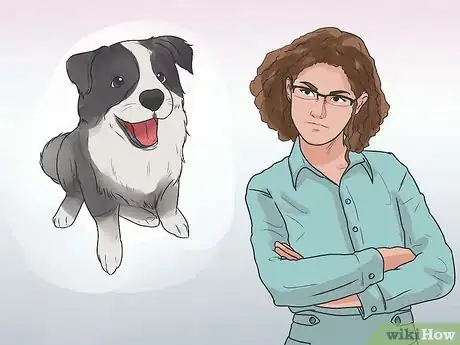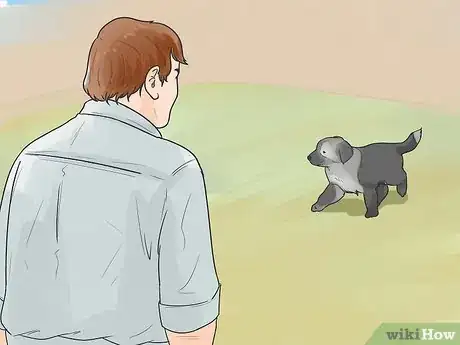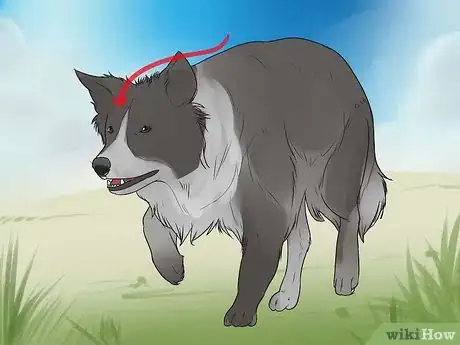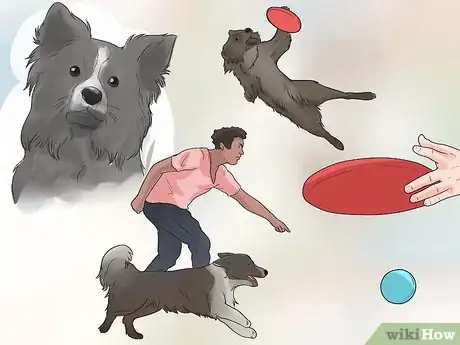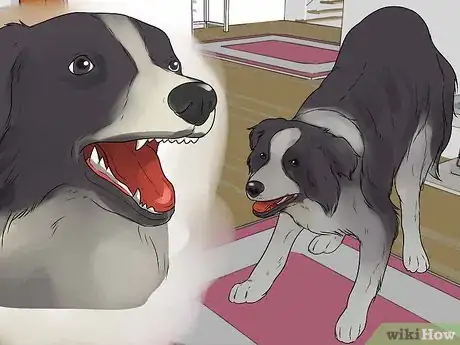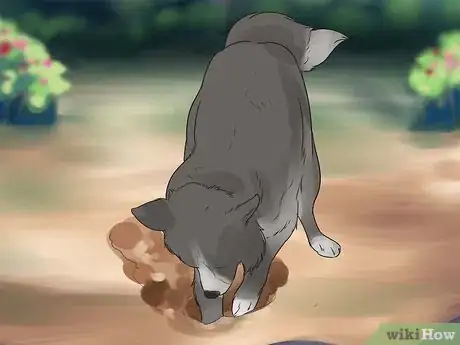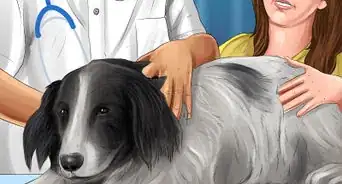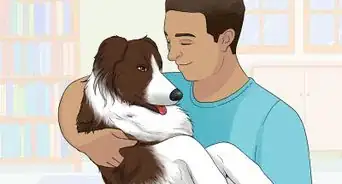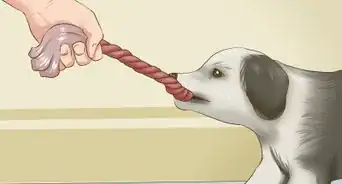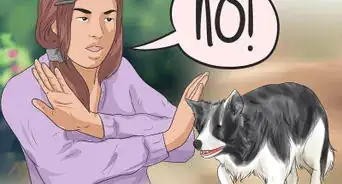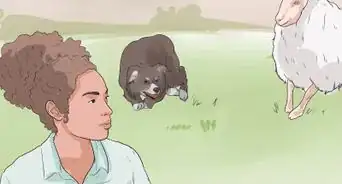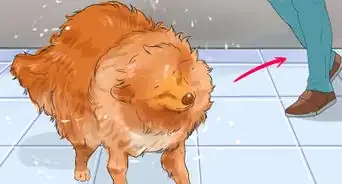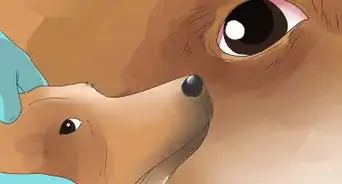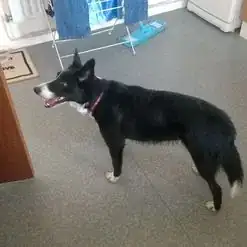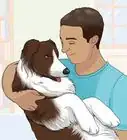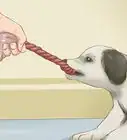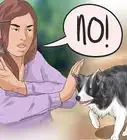This article was co-authored by Pippa Elliott, MRCVS. Dr. Elliott, BVMS, MRCVS is a veterinarian with over 30 years of experience in veterinary surgery and companion animal practice. She graduated from the University of Glasgow in 1987 with a degree in veterinary medicine and surgery. She has worked at the same animal clinic in her hometown for over 20 years.
There are 12 references cited in this article, which can be found at the bottom of the page.
wikiHow marks an article as reader-approved once it receives enough positive feedback. In this case, 100% of readers who voted found the article helpful, earning it our reader-approved status.
This article has been viewed 193,968 times.
Border collies are often ranked as one of the smartest dog breeds. That means that they love to learn, and in fact, need to learn to stay happy and active. You can train your border collie in a number of commands over time, as she is smart enough to learn a wide variety.
Steps
Teaching Your Border Collie Tricks
-
1Break the trick down. For instance, the command "stay" can be broken into a number of steps. The first step is to teach your dog to sit and not get up until you tell her to. Then, you can move on to staying for a short time. Next, move on to staying for a longer period.[1]
- One trick you might want to teach your border collie is "down," since border collies like to herd anything they animal or person they can find. By teaching them this trick, you'll be able to control their behavior better when they start to herd, especially if you pair it with other commands such as "drop."
-
2Keep commands consistent. That is, always use the same word for the same behavior. Switching between "sit" and "sit down" can confuse your dog. Pick one, and stick to it.[2] Border collies are also smart enough to learn whistle commands.Advertisement
-
3Say the command once. Border collies will pick up on the command quickly, so just say it once and teach the behavior. If you say it multiple times, she may expect you to say it multiple times every time you give the command.[3]
-
4Use a treat to encourage the behavior you want. For instance, if you want to teach a dog to sit, hold the treat an inch in front of her nose. Slowly move the treat above her head. This movement encourages her to sit. Don't forget to use the command in conjunction with the action. Once the dog sits, praise her and give her the retreat.[4]
-
5Fade out the treats. Once the dog starts learning the trick, you can still guide the dog but take away the treat. Reward him with praise and petting.[5]
- Instead of fading out the treats completely, you can use intermittent reinforcement. That is, only reward the dog with a treat at random times. That way, she will still do what you want with the hope of getting a treat, but she won't expect one every time. Border collies are smart enough to understand this process.
-
6Keep repeating the practice. Over time, keep repeating the command so that your dog will slowly learn what you want her to do.[6]
-
7Limit your training periods to short intervals. Most dogs get bored easily, and it can be especially true with border collies, given their high intelligence. Don't let a training session go beyond 15 minutes.[7]
-
8Change up your tricks. That is, don't try to teach the same trick for the whole 15 minutes. You can do as few as 5 repetitions trying to teach one trick or up to 15. Switch to another task after that.[8]
-
9End happy. That is, end with a trick your dog knows how to do. That way, you can praise her up and down, and she'll be willing to try learning tricks with you again sometime.[9]
Teaching Your Border Collie to Catch a Disc
-
1Understand your border collie's instincts. Border collies are herding dogs, but they are also chasing dogs. Therefore, games and sports like catching discs are perfect for border collies.
- In fact, disc catching and throwing is not just a backyard sport, as you can compete with your dogs in local and national competitions.[10]
-
2Provide food in the disc. If your border collie associates the disc with food, he'll think it's okay to hold it in its mouth. Try providing dinner in the disc for several nights in a row.[11]
-
3Tease him with the disc. Shake the disc back and forth in play. Your border collie will likely latch on to it and want to play.[12]
-
4Tell him to drop it. First let him play with the disc, saying "good boy!" Then tell him to "drop it." Try to pull it back from him. Don't let him play tug-of-war. If he doesn't want to give it up, just stop talking and praising. In fact, ignore him completely. Because he wants your attention, he'll likely drop it. Praise when he does. Continue working on the "drop it" cue.[13]
-
5Start with rolling. Your pup will naturally chase after the disc if you roll it away from you. Ask him to come back, and tell him to "drop it." He'll soon catch on that this game is fun, and he'll play along.[14]
-
6Throw the disc. When throwing, toss it away from your border collie. He will chase it down or even catch it in the air. You don't want to toss it directly at your border collie, as you could hit him and it takes some of the fun out of chasing it down.[15] Let him play with it if he catches it, but go grab it yourself if he doesn't, as your teaching him to catch it and playing with the disc is a reward.[16]
-
7Call him back to you. Once your border collie catches the disc, call him back to you, and tell him to drop it for you.[17]
-
8Train in various styles. For instance, one event in disc events for dogs is throwing and catching at various distances. You'll need to practice your throws, and you'll need to teach your dog to catch at these various distances. Generally, in these events, you gradually increase your distance in a timed period.[18]
House Training Your Border Collie
-
1Start young. As soon as you have your border collie in your house, you can start training it. Your puppy is absorbing information whether you are actively trying to train him or not, so you might as well start teaching good habits young.[19]
-
2Keep your puppy in a confined space. You can use a crate or a leash. You can also try a small room. That way, you can keep an eye on the puppy, and if he starts to go the bathroom, you can take him outside.[20] Also, dogs don't like going to the bathroom in the same place they sleep, so your puppy is less likely to go in a relatively small space.[21]
- When picking out a crate, check to see if it is large enough. Your dog should be able to stand up in it and turn around.[22]
- Stop using the crate for a time if the dog decides to go the bathroom in it, as that defeats the purpose. He may not be ready for house training, or he may have other issues you need to solve, such as taking him out more often.[23]
-
3Take your puppy out often. Your 2-month-old puppy can hold it for about 2 hours, while a 3-month-old can hold it for about 3 hours, and so on. However, when you are trying to house train your puppy, make sure to take it out at least every 1 to 2 hours to go to the bathroom.[24] Some experts recommend waiting until 3 months to start training your puppy, when he has more control over his bladder.[25]
- The best way is use a leash and lead your puppy to the same spot in the yard every time. One of the benefits of using the same spot is your puppy will smell her scent there and want to go in the same place.[26] Also, begin using a verbal cue, such as "potty time" each time, so your dog learns to associate those words with going to the bathroom.[27]
- If your dog doesn't go to the bathroom when you take him outside, put him back in the confined space, and try again in 30 minutes.
-
4
-
5Take the puppy outside if she starts going to the bathroom. Start by making a noise to startle the pup a bit and get her to stop going. Then, take out to her spot in the yard. If she keeps going there, follow with a reward.[30]
-
6Keep on a schedule. Of course, you need to take your puppy out on schedule. However, you also need to feed him on schedule, as that will lead to more consistent bathroom times. You'll need to feed your dog about 4 times a day, so spread the feeding times out evenly over the day.[31]
-
7Be consistent. If you're not consistent with providing and taking away rewards, your dog will be confused about what you want.[32]
-
8Don't try negative reinforcement. For instance, pushing the dog's face in an accident or getting angry will only make the situation worse. Your dog may learn to be afraid of you, rather than what you want--to go to the bathroom outside. Give as little attention as possible to the problem when he has an accident because even negative attention is attention to a dog.
-
9Be patient. It can take up to half a year to fully house train your dog. You may get frustrated at all the accidents, but you will be rewarded in the end with a dog who knows when to go to the bathroom.[33]
-
10Allow your puppy more range. If your dog seems to have potty training down, you can give him more freedom to roam around the house. However, you should still try to keep him out of areas that you really don't want him to use the bathroom in.[34]
Understanding Your Border Collie
-
1Watch for the stance. If your border collie lowers her head and front legs, as well as her tail, she is getting into her herding stance. This stance is part of her natural instinct for herding. If you see her drop into this stance, it's because she wants to herd whatever it is she's concentrating on, from cats to cars.
-
2Give your border collie plenty of exercise. Border collies need a great deal of stimulation, so be sure to give your dog plenty of exercise to keep her happy.[35]
-
3Learn the difference between your border collie's growls. A border collie usually has two types of growls, one serious and one play. You need to learn the difference so you don't upset your dog when she's being serious. Listen for play growls when she's playing tug-of-war, and learn to differentiate the sound from her more serious growl.
- Learning these two growls will also help if you choose to train your border collie on sheep, as you'll be able to tell when she is growling at the sheep in earnest.
-
4Let your dog follow her instincts. Your border collie was bred to help out shepherds by herding animals. That means that she wants a job to do. If you can give her a space to herd, that's great. If you don't have room for other animals, you may consider recreational herding, which is a form of dog sport.[36]
- Other "jobs" you can give your border collie involve providing her with a digging hole (out of the way) or allowing her to "herd" cats under your direction. Use her bad behaviors, such as digging holes in the yard or chasing cats, and turn them into something controlled.
Expert Q&A
Did you know you can get expert answers for this article?
Unlock expert answers by supporting wikiHow
-
QuestionMy Border collie jumps up and bites me hard. What can I do about this aggressive behavior?
 Pippa Elliott, MRCVSDr. Elliott, BVMS, MRCVS is a veterinarian with over 30 years of experience in veterinary surgery and companion animal practice. She graduated from the University of Glasgow in 1987 with a degree in veterinary medicine and surgery. She has worked at the same animal clinic in her hometown for over 20 years.
Pippa Elliott, MRCVSDr. Elliott, BVMS, MRCVS is a veterinarian with over 30 years of experience in veterinary surgery and companion animal practice. She graduated from the University of Glasgow in 1987 with a degree in veterinary medicine and surgery. She has worked at the same animal clinic in her hometown for over 20 years.
Veterinarian It's important first to establish if this is aggression, a learnt behavior, or exaggerated play behavior. This matters because correcting the biting will depend on the underlying cause. While waiting for an appointment with a certified dog behaviorist, it will do no harm to beef up your dog's basic training. Use reward-based methods to teach a rock solid sit. This gives you a method of control when you recognized the signs the dog is about to jump up.
It's important first to establish if this is aggression, a learnt behavior, or exaggerated play behavior. This matters because correcting the biting will depend on the underlying cause. While waiting for an appointment with a certified dog behaviorist, it will do no harm to beef up your dog's basic training. Use reward-based methods to teach a rock solid sit. This gives you a method of control when you recognized the signs the dog is about to jump up. -
QuestionCan I put a Halti on my 7-month-old Border Collie?
 Pippa Elliott, MRCVSDr. Elliott, BVMS, MRCVS is a veterinarian with over 30 years of experience in veterinary surgery and companion animal practice. She graduated from the University of Glasgow in 1987 with a degree in veterinary medicine and surgery. She has worked at the same animal clinic in her hometown for over 20 years.
Pippa Elliott, MRCVSDr. Elliott, BVMS, MRCVS is a veterinarian with over 30 years of experience in veterinary surgery and companion animal practice. She graduated from the University of Glasgow in 1987 with a degree in veterinary medicine and surgery. She has worked at the same animal clinic in her hometown for over 20 years.
Veterinarian
-
QuestionAre Border Collies a good family dog?
 Pippa Elliott, MRCVSDr. Elliott, BVMS, MRCVS is a veterinarian with over 30 years of experience in veterinary surgery and companion animal practice. She graduated from the University of Glasgow in 1987 with a degree in veterinary medicine and surgery. She has worked at the same animal clinic in her hometown for over 20 years.
Pippa Elliott, MRCVSDr. Elliott, BVMS, MRCVS is a veterinarian with over 30 years of experience in veterinary surgery and companion animal practice. She graduated from the University of Glasgow in 1987 with a degree in veterinary medicine and surgery. She has worked at the same animal clinic in her hometown for over 20 years.
Veterinarian
References
- ↑ http://www.humanesociety.org/animals/dogs/tips/housetraining_puppies.html
- ↑ http://www.humanesociety.org/animals/dogs/tips/housetraining_puppies.html
- ↑ http://www.nylabone.com/dog-101/training-behaviors/introduction-to-training/
- ↑ https://www.aspca.org/pet-care/virtual-pet-behaviorist/dog-behavior/teaching-your-dog-sit
- ↑ https://www.aspca.org/pet-care/virtual-pet-behaviorist/dog-behavior/teaching-your-dog-sit
- ↑ https://www.aspca.org/pet-care/virtual-pet-behaviorist/dog-behavior/teaching-your-dog-sit
- ↑ https://www.aspca.org/pet-care/virtual-pet-behaviorist/dog-behavior/training-your-dog
- ↑ https://www.aspca.org/pet-care/virtual-pet-behaviorist/dog-behavior/training-your-dog
- ↑ https://www.aspca.org/pet-care/virtual-pet-behaviorist/dog-behavior/training-your-dog
- ↑ http://www.ufoworldcup.org/content/Rules/Freestyle.php
- ↑ http://pets.thenest.com/teach-border-collie-catch-frisbee-9681.html
- ↑ http://pets.thenest.com/teach-border-collie-catch-frisbee-9681.html
- ↑ http://pets.thenest.com/teach-border-collie-catch-frisbee-9681.html
- ↑ http://pets.thenest.com/teach-border-collie-catch-frisbee-9681.html
- ↑ http://dogsbordercollie.com/training/frisbee
- ↑ http://pets.thenest.com/teach-border-collie-catch-frisbee-9681.html
- ↑ http://dogsbordercollie.com/training/frisbee
- ↑ http://www.allbordercollies.com/Border-Collie-Frisbee.php
- ↑ http://pets.webmd.com/ask-pet-health-11/pet-training
- ↑ http://pets.webmd.com/dogs/guide/house-training-your-puppy
- ↑ http://pets.webmd.com/dogs/guide/house-training-your-puppy?page=2
- ↑ http://pets.webmd.com/dogs/guide/house-training-your-puppy?page=2
- ↑ http://pets.webmd.com/dogs/guide/house-training-your-puppy?page=2
- ↑ http://www.humanesociety.org/animals/dogs/tips/housetraining_puppies.html
- ↑ http://pets.webmd.com/dogs/guide/house-training-your-puppy
- ↑ http://pets.webmd.com/dogs/guide/house-training-your-puppy
- ↑ http://www.humanesociety.org/animals/dogs/tips/housetraining_puppies.html
- ↑ https://www.aspca.org/pet-care/virtual-pet-behaviorist/dog-behavior/training-your-dog
- ↑ http://www.humanesociety.org/animals/dogs/tips/housetraining_puppies.html
- ↑ http://www.humanesociety.org/animals/dogs/tips/housetraining_puppies.html
- ↑ http://www.humanesociety.org/animals/dogs/tips/housetraining_puppies.html
- ↑ http://www.humanesociety.org/animals/dogs/tips/housetraining_puppies.html
- ↑ http://pets.webmd.com/dogs/guide/house-training-your-puppy
- ↑ http://pets.webmd.com/dogs/guide/house-training-your-puppy?page=2
- ↑ http://www.akc.org/dog-breeds/border-collie/detail/
- ↑ http://www.akc.org/dog-breeds/border-collie/detail/
About This Article
One way to train border collies is by teaching them simple commands. Start with 15-minute intervals of learning simple commands such as “sit,” “lay down,” and “stay.” Firmly say the command one time, and guide the dog through the movement for the trick. When you’re teaching the trick, be sure to use the same word for the command, and reward your pet for performing it correctly by giving it a treat or positive affirmation. Switch between different tricks to keep the dog interested, but repeat the tricks so it doesn’t forget what it has learned! To learn more from our Veterinarian co-author, like how to house train your border collie, keep reading the article!
